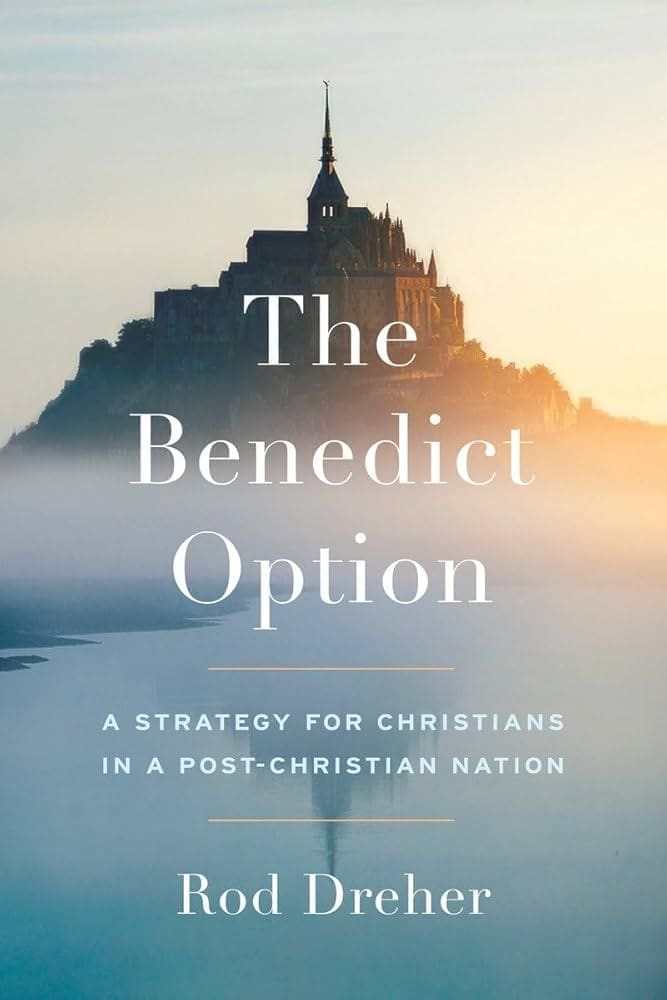I
In the treasure trove of Augustine’s letters, you’ll find a remarkable, ongoing correspondence with a man named Boniface, a Roman general and governor in North Africa. At one point in his career—embattled, bitter, despairing—Boniface is tempted to abandon his post, withdraw from public responsibility, and take up a kind of monastic life. Given that Augustine founded monastic communities and wrote his own Rule, Boniface probably expected his plan to receive an encouraging reply from the aging bishop in Hippo. Instead, Augustine counsels him to remain in his post as a matter of divine calling. While some are called to lives of chastity and perfect continence and cloistered devotion, Augustine notes, “Each person, as the apostle says, has his own gift from God, one this gift, another that (1 Cor. 7:7). Hence others fight invisible enemies by praying for you; you struggle against visible barbarians by fighting for them.” His counsel is rooted in an eschatological caution: “Because in this world it is necessary that the citizens of the kingdom of heaven suffer temptation among those who are in error and are wicked so that they may be exercised and put to the test like gold in a furnace,” Augustine says, “we ought not to want to live ahead of time with only the saints and the righteous.” Augustine’s admonition not to “live ahead of time” is his way of saying: Don’t fall for the temptation of a realized eschatology. We pray “thy kingdom come” among those who oppose it. Indeed, it’s a prayer we can tend to forget when we dwell “with only the saints and the righteous.”
We pray “thy kingdom come” among those who oppose it. Indeed, it’s a prayer we can tend to forget when we dwell “with only the saints and the righteous.”
When this temptation to withdraw haunted Boniface again and he again wanted to abandon public life and retreat to a monastery to devote himself to “holy leisure,” Augustine continued to counsel otherwise. “What held you back from doing this,” Augustine reminds him, “except that you considered, when we pointed it out, how much what you were doing was benefitting the churches of Christ? You were acting with this intention alone, namely, that they might lead a quiet and tranquil life, as the apostle says, in all piety and chastity (1 Tim. 2:2), defended from the attacks of the barbarians.” Augustine the pastor is mounting a theological case for the Roman general to man his station, do his job, be faithful as count and governor. Whatever disputes or frustrations Boniface might have with Rome, he still owes a debt: “If the Roman empire has given you good things,” Augustine says, “albeit earthly and transitory ones, because it is earthly, not heavenly, and cannot give save what it has in its control—if, then it has conferred good things upon you, do not repay evil with evil.” In these letters we hear something of Augustine’s hopes for Boniface and those like him: the hope for faithful agents of the coming kingdom who answer the call to public life and administer the common good in this saeculum of our waiting.
Let Them Eat Cake
In a sense, Boniface could be our contemporary. He lives in a fractured political context—he’s literally fighting barbarians—in which paganism still holds sway, whatever the emperor might think. What does it look like to follow Christ in such a world? That is precisely the question driving Rod Dreher’s new book, The Benedict Option, which is offered to a world that sometimes feels as fraught as the late Roman empire of Augustine’s time. Indeed, invoking a new “barbarism,” Dreher looks to Benedict: “Saint Benedict had taken the proper measure of Rome. He acted wisely by leaving society and starting a new community whose practices would preserve the faith through the trials ahead.”
But when it comes to rubber-meets-the-road questions of professional calling and cultural engagement, you can start to feel the difference between Augustine and Dreher’s Benedict. The Augustinian counsel of stability is an admonishment to stay in the mix of things, among those in error—to inhabit our callings in what Augustine called the permixtum of the saeculum, the mixed-up-ness of the time between cross and kingdom come. In contrast, in a chapter on employment and work, Dreher takes the commitment to stability in the Benedictine Rule and turns it into a counsel of despair: “We may not (yet) be at the point where Christians are forbidden to buy and sell in general without state approval, but we are on the brink of entire areas of commercial and professional life being off-limits to believers whose consciences will not allow them to burn incense to the gods of our age.” These professions, by the way, turn out to be “florists, bakers, and photographers” as well as public school teachers and university professors. So “Christian students and their parents must take this into careful consideration when deciding on a field of study in college and professional school,” Dreher advises. Maybe Boniface could find a way to navigate the messiness of war in a still-pagan world, but it’s hard for Dreher to imagine a future for Christian doctors and florists in our newly pluralistic one.
When Dreher encourages “bold” and “entrepreneurial” responses to these realities, the examples sound like a replay of subcultural production—little cottage industries that function as what James Davison Hunter has described as “parallel institutions”—coupled with the tribal admonishment to “buy Christian” (which is why in the United States you see little icthuses on business listings in the Yellow Pages—well, when we used to have Yellow Pages!). Dreher seems to think these are suggestions that are fresh and forward-looking, but a lot of us have already seen this movie. And we know how it ends.
If I Had a Hammer . . .
The Benedict Option begins with a flood and ends with an earthquake. In between is an instruction manual for building an ark and a map that will get you to the hills. That’s not my impression; it’s Dreher’s point.
In the first trope, the Benedict Option is offered as a way “to quit piling up sandbags and to build an ark in which to shelter until the water recedes and we can put our feet on dry land again.” Instead of “wasting energy and resources fighting unwinnable political battles,” the Benedict Option offers a lifeboat strategy “that can outwit, outlast, and eventually overcome the occupation.”
The second metaphor comes from Norcia, home to the Basilica of St. Benedict that was tragically destroyed by an earthquake in August 2016. Dreher reads it as an allegory, “a sign to the world”: “Because they headed for the hills after the August earthquake, they survived.” Go and do likewise.
But what is the “flood”? And where is the epicentre of the cultural quake Dreher is talking about? Dreher spies nothing less than civilizational apocalypse. “There are people alive today who may live to see the effective death of Christianity within our civilization,” he warns. And the alarm bells keep coming, building to a shrill cacophony: “The day is coming,” he prophesies—and it’s hard not to picture the hand-painted picket sign—”when the kind of thing that has happened to Christian bakers, florists, and wedding photographers will be much more widespread.” Christians need to sense “how urgent” the fight for religious liberty is, he cautions; they need “to rise from their slumber and defend themselves while there is still time.” (Can you fight from an ark? Is it a Navy?) At the same time, “conservative Christians must now prepare ourselves for very dark times.” (The first-person plural pronouns in this book tell you a lot.)
In the second half of the book, Dreher fans this alarmism with the perfect fuel: anecdotes and anonymity. For example: “Anecdotally confirming what seems to be a trend, a woman in suburban Baltimore said to me, ‘All those people who say you are alarmist about the Benedict Option must not be raising children.'” These sorts of first-person asides from unnamed individuals pepper the narrative with just the right lines to “confirm” Dreher’s analysis. In this sense, the book echoes his blog, which is regularly given to sensationalist cases as “evidence” of where Western civilization is headed.
What makes Dreher’s book both puzzling and frustrating is this over-the-top alarmist tenor coupled with a highly selective focus on matters of sexual ethics as “orthodoxy.” More specifically, while there is only one chapter on marriage and sexuality, the entire argument is framed by what he calls “the Waterloo of religious conservatism”: the Obergefell Supreme Court decision that legalized same-sex marriage. If Dreher has earned the label “reactionary,” it’s because his proposal—this “strategy”—is predicated on a response to cultural conditions. It starts from environmental factors in “the culture” instead of being catalyzed internally by the logic of mission. It makes this “option” sound like a new thing demanded by “the times” rather than a way of life that has always been called for by taking up our cross and bearing witness to the gospel. The irony, then, is that The Benedict Option, though inviting us to consider a “classic” example in the Rule of St. Benedict, is a proposal that feels entirely parochial to a time (post-2015) and place (the United States).
In the end, my worry is that what you get in Dreher is fundamentalism minus the rapture. He’ll protest otherwise or deflect by suggesting the fundamentalism charge bounces back onto evangelical critics who are pathologically hungry for “relevance” or credibility because of an inferiority complex. That’s a red herring I’m not buying. The question is whether the shoe fits, not whether critics used to wear them.
The ark trope is one I first learned in the basement of a Plymouth Brethren assembly hall where a mammoth version of Clarence Larkin’s dispensational charts hung across the wall like a mural. There I was inducted into John Nelson Darby’s doctrine of “separation from evil as God’s principle of unity.” So when Dreher worries about a time when “Christians are forbidden to buy or sell,” I was transported back to Bible prophecy conferences that explained to us the real meaning of “the mark of the beast.” (It was the chip-and-pin system, if I recall.) Or when Dreher celebrates those who know they need to “come out of Babylon and be separate,” he’s rewriting a script I’ve seen played out before. And his specific proposals in the book—for alternative employment networks, homeschooling, secluded communities—look and sound familiar. Merely asserting this isn’t fundamentalism doesn’t make it so. The question is whether the analysis and proposal fit the template of cultural demise and sanctification by separation.
Of course, what Dreher lacks is the full-blown declinist history that is part of the dispensationalist package. In the more typical, dispensationalist rendition of fundamentalism, the floodwaters are not receding until the Second Coming. Things are not going to get better. So get in the ark, stay in the ark, and ride it out till Jesus comes back. (Remember: never get out of the boat.)
Dreher’s theology of history is a little more complicated. It’s not clear what the endgame is that he expects, and I think there is some incoherence to his proposal because of it. Allegedly, the BenOp ark is where civilization will be guarded until—what, exactly? He seems to envision a time in the future where the florist and photographers and wedding cake bakers can let down the gang plank and re-enter a society that is eager to welcome them. But why would they? What’s the theological grounding for that expectation, especially given the arc of the history Dreher tells? If these Christians have undertaken the “strategic withdrawal prophesied by MacIntyre” and “will have to be somewhat cut off from mainstream society,” then why expect that conditions outside of the ark will have improved? Dreher’s ark is more like a submarine, taking a dive to return to the the surface. But when? When “the culture” comes back? Why should we expect that given his analysis and proposal? I guess a lot hangs on that “somewhat.”
Allegedly, the BenOp ark is where civilization will be guarded until—what, exactly?
Whose Monastery? Which Orthodoxy?
Perhaps what puzzles me the most is just what is original in Dreher’s proposal. For anyone who has been reading Hauerwas and Willimon or Jonathan Wilson or Hans Boersma or Charles Taylor or Matthew Crawford, among others, a lot of The Benedict Option will sound very familiar. Indeed, these ideas could only sound fresh to those who are somehow unfamiliar with the riches of catholic Christianity for contemporary faith. But the Benedict Option is not just the amalgam of these sources, the journalistic sum of these scholarly parts. Indeed, none of these source authors land where Dreher does. So then just what is unique to Dreher?
The uniquely Dreher-ish rendition of these analyses and proposals by others repurposes them within a project that is narrow and reactionary, with little of the outlandish beauty of grace. This is probably my biggest concern: that Dreher’s idiosyncratic repackaging of the historic disciplines and formative practices of the church retroactively makes newcomers and outsiders mistake the Great Tradition with the narrowness of the Benedict Option—that the catholic heritage of the faith gets owned by the BenOp™, thereby associating the treasures and riches of the tradition with a particular take that is ultimately parochial and reactionary.
For example, was John Calvin extolling Rod Dreher’s Benedict Option when he hoped that the entire city of Geneva could be reformed as a magnum monasterium? When Abraham Kuyper founded a Christian political party, a Christian newspaper, and a Christian university, was he unwittingly a practitioner of the Benedict Option? When Reformed communities in Michigan or Ontario built Christians schools alongside their churches, were they building arks in despair of the culture around them? Is Stanley Hauerwas merely an early adopter of the BenOp™? No, because they all had a fundamentally different posture and hope. Their proposals and actions grew out of the logic of mission and not merely as a “strategy” reacting to the times. They had fundamentally different understandings of the relationship between the church and the world.
If every form of intentionality about Christian community, every expression of liturgical formation, every instance of ecclesial “centring” gets mistaken for the Benedict Option, then what is really a catholic inheritance is going to be confused with Dreher’s unique brand of resentment.
What is really a catholic inheritance is going to be confused with Dreher’s unique brand of resentment.
What’s unfortunate is that a constructive, even beautiful call to a way of life that bears witness to how the world could be otherwise gets buried in alarmism and reactionary posturing. Indeed, when I read these closing paragraphs of The Benedict Option, I wondered what sort of book this might have been if the tone here had characterized the entire project:
We live liturgically, telling our sacred Story in worship and song. We fast and we feast. We marry and give our children in marriage, and though in exile, we work for the peace of the city. We welcome our newborns and bury our dead. We read the Bible, and we tell our children about the saints. And we also tell them in the orchard and by the fireside about Odysseus, Achilles, and Aeneas, of Dante and Don Quixote, and Frodo and Gandalf, and all the tales that bear what it means to be men and women of the West.
We work, we pray, we confess our sins, we show mercy, we welcome the stranger, and we keep the commandments. When we suffer, especially for Christ’s sake, we give thanks, because that is what Christians do. Who knows what God, in turn, will do with our faithfulness? It is not for us to say. Our command is, in the words of the Christian poet W.H. Auden, to “stagger onward rejoicing.”
Here Dreher captures something of the beauty of a way of life that could maybe, just maybe, by the grace of God, make a dent on the world. Why hide it in an ark? What if the clamour of opposition to Christianity is just a mask for a hunger that’s already there?
Dreher’s Benedict is one option the church could take in the twenty-first century. As I argue in Awaiting the King, my hope is that instead we’ll answer an Augustinian call: centring ourselves in the life-giving practices of the body of Christ, but from there leaning out boldly and hopefully into the world for the sake of our neighbours. As Eric Gregory has argued, it is this kind of Augustinian call that Martin Luther King Jr. answered in the civil rights movement. Indeed, these questions of civilization-level challenge brought to mind King’s address in the final days of the Montgomery Bus Boycott, highlighted in the opening of Charles Marsh’s remarkable study The Beloved Community:
We have before us the glorious opportunity to inject a new dimension of love into the veins of our civilization. There is still a voice crying out in terms that echo across the generations, saying: “Love your enemies, bless them that curse you, pray for them that despitefully use you, that you may be the children of your Father which is in Heaven.”
This is still our opportunity; this is still the call that comes to us. Augustine’s call and King’s example will keep some of us from boarding the ark. I hope the new Benedictines will pray for us.







